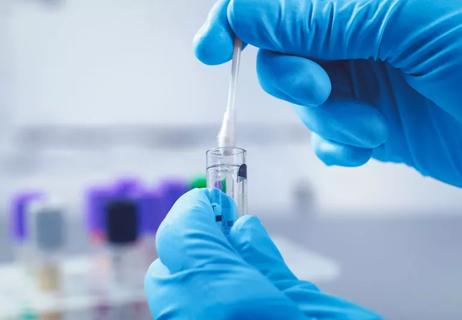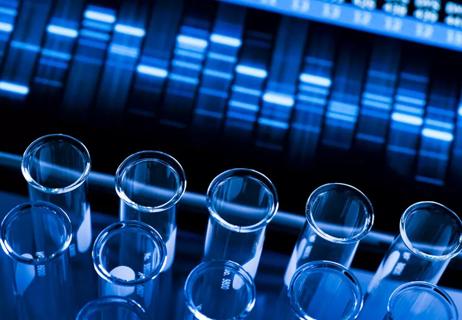The differences between identical, fraternal and six other types of twins

Sometimes, good things come in pairs. Two peas in a pod. Two thumbs up for a job well done. And the ultimate two-for-one deal: twins.
Advertisement
Cleveland Clinic is a non-profit academic medical center. Advertising on our site helps support our mission. We do not endorse non-Cleveland Clinic products or services. Policy
You probably already know about the two most common types of twins — fraternal and identical. But what’s the difference? And are there other kinds of twins?
We talked with Ob/Gyn Julian Peskin, MD (who is a twin himself), about common types of twins, rare types of twins and everything else you’ve been wondering about twinning.
Let’s start with the basics of how embryos form to understand the mechanics of where twins come from.
During ovulation, one or more eggs are released. When an egg is fertilized by sperm, it’s called a zygote. The zygote quickly starts growing into a small cluster of cells that travels from the fallopian tube and implants in the uterus. It continues to grow and begins to form a placenta, which provides nutrients to the developing embryo.
You may think one egg is released during each ovulation cycle. But that’s not always the case. Fraternal twins happen because some people release two eggs (or more) at a time. That’s called superovulation.
Advertisement
If two sperm fertilize two eggs, voilà: fraternal twins. Fraternal twins are also called dizygotic twins (as in, coming from two zygotes).
Fraternal twins are no more genetically similar than any other pair of siblings who share biological parents.
That’s because each egg and each sperm contain different genes, Dr. Peskin explains. The genes in each egg and each sperm are some combination of the genes inherited from parents.
So, one fraternal twin can have genes for blue eyes and dimples while the other is brown-eyed and dimple-less.
Fraternal twins may or may not be assigned the same sex at birth. That means fraternal twins could be two boys, two girls, or one boy and one girl.
When fraternal twin zygotes set up shop in the uterus, they’ll create two separate placentas to nourish them until birth. But those placentas can fuse.
“Some people will say, ‘Oh they must be identical twins if there’s only one placenta,’ but that’s not always true. It can get cramped inside the uterus, so those two placentas can start to grow together,” Dr. Peskin explains. “Structurally, they’re separate placentas with separate blood vessels, but it can look like one instead of two.”
Fraternal twins are more common than identical twins. And what’s interesting, Dr. Peskin says, is that fraternal twins happen more in some parts of the world than others.
Researchers have shown that rates of twinning worldwide are highest in Africa and North America, where about 17 out of every 1,000 births are twins.
Fun fact: The Igbo-Ora community in Southwest Nigeria has the highest fraternal twin rate in the world. Researchers say fraternal twins account for 45 out of every 1,000 births in the community.
Twins are rarer in South America and Asia — accounting for about 9 out of every 1,000 births.
“The rates of identical twins don’t change much in any part of the world. But the rate of fraternal twins varies greatly,” he notes. “The reason for that needs more research, but we do understand that superovulation, which is needed for fraternal twins to develop, is something you may be genetically predisposed to.”
You’ve probably heard that fertility treatments like in vitro fertilization (IVF) and the fertility drug clomiphene can result in a higher chance of having fraternal twins. That’s true, but there are also some other factors. Dr. Peskin says people are more likely to superovulate if:
Advertisement
Identical twins are also called monozygotic twins. That’s because they are the result of one zygote — one fertilized egg — that splits in two. Scientists currently don’t know what causes that split. But the result is two embryos that have all the same genetic material. That’s because they come from the same egg and the same sperm.
Except in cases where an identical twin has ambiguous or intersex genitals, identical twins will be the same sex assigned at birth (two girls or two boys).
Identical twins tend to look very similar. More similar than most siblings. But Dr. Peskin explains that when people say “identical” twins, it doesn’t mean they won’t have any physical differences.
“There are factors beyond your genes that affect the way you look,” Dr. Peskin says. “The lives identical twins lead can make a big difference in their appearance. Things like whether one of them smokes, or spends more time in the sun, or exercises more, or has more stressors in their life … it all has an impact.”
Even at birth, you may be able to see some differences in identical twins. Small genetic mutations can happen in the womb. So, one twin may have a mole or a birthmark that helps you recognize who’s who. Or maybe one got more blood from the placenta than the other, so one twin is born a little bigger.
Advertisement
Identical twins are less common than fraternal twins. Identical twins happen in about 3 to 5 out of every 1,000 births. While fraternal twins tend to run in families, identical twins don’t.
It’s a common misconception that fraternal twins have two placentas and identical twins share one. Dr. Peskin says that isn’t the case. The only way you know for sure whether twins are identical or fraternal is through DNA tests after delivery.
That’s because identical twins may have one or two placentas. It depends on how early the zygote splits. If the split happens earlier in their development, around three or four days after fertilization, they’ll create two separate placentas. If the split happens later, they may share a placenta.
“The issue with a single placenta in monozygotic twins is if there’s any sharing of blood vessels,” Dr. Peskin explains, “it’s called twin-to-twin transfusion syndrome, and it can cause one twin to get much more blood than the other. The result can be that one twin becomes very big and the other will be smaller or even underdeveloped.”
For that reason, and others, twin pregnancies are considered to be higher risk than singletons. People pregnant with twins and other multiples are recommended to have more prenatal testing and additional prenatal appointments to ensure healthy fetal development.
Advertisement
Fraternal and identical twins are by far the most common types of twins, but there are isolated cases of other kinds of twins. These twins tend to get attention on the news and in other media because they’re so uncommon. (Think: Scenarios you’re more likely to see on a medical soap opera than in real life.)
Conjoined twins happen in very rare cases where one zygote begins to split, but doesn’t completely separate. The result is two identical twins who share one or more organs.
“If the egg splits after about day seven post-fertilization, there is a risk of twins who share organs,” Dr. Peskin explains.
Conjoined twins can be connected in a number of ways — at the belly, chest, head and elsewhere. Dr. Peskin notes that these days, some conjoined twins may be separated, but not always. Separating conjoined twins is a decision left to parents in consultation with their health team and others.
Conjoined twins are estimated to occur only once in every 50,000 pregnancies.
Conjoined twins describe two fully formed fetuses that are connected.
Parasitic twins, on the other hand, are a type of twin where one twin is fully developed and the other is underdeveloped. The underdeveloped fetus is nonfunctional. It often doesn’t survive the pregnancy. The result may look like one person who has additional limbs or other organs.
Parasitic twins may develop similarly to conjoined twins, where one zygote doesn’t fully separate. Or they may come from two separately fertilized eggs that fuse together. In that case, one zygote stops growing on its own and remains attached to the twin.
Parasitic twins are believed to affect fewer than 1 in 1 million births worldwide.
When a person is pregnant, they usually don’t ovulate again during pregnancy. Hormonal changes almost always prevent the release of another egg and don’t allow another embryo to form.
But in exceptional circumstances, an egg could be released during pregnancy. And that egg can become fertilized and grow.
It’s called superfetation. The result is two fetuses who are developmentally at different stages of growth because they were conceived separately. For context, there have only been about 10 confirmed cases of superfetation twins. Though they are gestationally different ages, they tend to be born together.
In cases of superfetation, it’s possible for twins to have different fathers. Because the eggs are released at different times, they could be fertilized by sperm from two separate partners.
We’ve all heard that it takes one egg and one sperm to conceive. But in incredibly rare cases (as in, there are currently two cases on record), twins may be the result of two sperm fertilizing one egg.
A case study from 2019 describes a set of “half-identical twins.” Because they shared a placenta, doctors originally assumed they were identical twins. But when an ultrasound showed they had different genitalia, more testing was done.
Scientists say the twins share 100% of the DNA from their biological mother and 78% of DNA from their biological father.
The theory is that two different sperm fertilized the egg, and then the zygote split. That means the twins came from the same egg but share genetic material from each of the two different sperm.
You may have heard about another type of twinning known as semi-identical twins or polar body twins. Researchers say there haven’t been any identified cases of these kinds of twins and we don’t have a way to test for them. So, the idea that they could exist is more a theory than something we know for sure.
The idea is this: An unfertilized egg divides. That’s a normal part of the ovulation process. That results in one egg and one off-shoot called a polar body. The polar body is usually underdeveloped and generally disappears.
If, in theory, the polar body would be strong enough, it could be fertilized along with the egg. The result would be a set of twins that are somewhere in between fraternal and identical. That’s because they would come from the same egg but two different sperm.
Twins, triplets and even higher-level multiples are common in many mammals. European hedgehogs typically have nine at a time. But we humans tend to be more of a “one at a time” kind of species. And even though there turn out to be a lot of ways for twins to form, you’re most likely to meet fraternal and identical twins in your life.
Learn more about our editorial process.
Advertisement

Genetic markers can determine if you’ll develop Huntington’s disease or pass it on to your children

New drugs are better at targeting cancer cells

Learn how they can help your health

The short answer from a genetic counselor

Knowing your family history and getting a genetic test can help detect colorectal cancer earlier

Family history matters for melanoma, but the connection isn’t as strong for other skin cancers

It can help determine a best treatment path

Type 2 diabetes isn’t inevitable with these dietary changes

Applying a hot or cold compress can help with pain